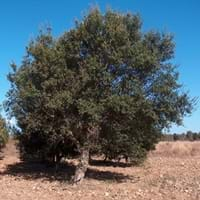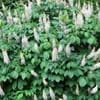Life Span
Perennial
Perennial
Origin
Southeastern United States
Southern Europe, Mediterranean, Northern Africa
Types
Not available
Not Available
Habitat
Bluffs, Coastal Regions, Stream side, Woods
Open Forest
USDA Hardiness Zone
5-9
7-9
Sunset Zone
Not Available
5, 6, 7, 8, 9, 10, 11, 12, 13, 14, 15, 16, 18, 19, 20, 21, 22, 23, 24
Habit
Spreading
Oval or Rounded
Flower Color
White, Pink
Red, Yellow green
Flower Color Modifier
Bicolor
Bicolor
Fruit Color
Brown
Not Available
Leaf Color in Spring
Green
Green, Gray Green, Dark Green
Leaf Color in Summer
Dark Green
Gray Green, Dark Green
Leaf Color in Fall
Lemon yellow, Yellow green
Gray Green, Dark Green
Leaf Color in Winter
Not Available
Gray Green, Dark Green
Plant Season
Spring, Summer, Fall
Spring, Summer, Fall, Winter
Sunlight
Full Sun, Partial Sun, Partial shade
Full Sun, Partial Sun
Type of Soil
Clay, Loam, Sand
Clay, Loam, Sand
The pH of Soil
Acidic, Neutral, Alkaline
Acidic, Neutral, Alkaline
Soil Drainage
Average
Average
Bloom Time
Summer, Late Summer
Spring
Tolerances
Salt, Wind
Drought, Salt
Where to Plant?
Ground, Pot
Ground
How to Plant?
Cuttings, Seedlings
Seedlings, Stem Planting, Transplanting
Plant Maintenance
Low
Medium
Watering Requirements
Keep the Soil well drained, Requires regular watering
Average Water Needs, Do Not over Water, Keep ground moist, Never Over-water, Requires watering in the growing season, Water less during winter
In Summer
Lots of watering
Lots of watering
In Spring
Moderate
Moderate
In Winter
Average Water
Average Water
Soil pH
Acidic, Neutral, Alkaline
Acidic, Neutral, Alkaline
Soil Type
Clay, Loam, Sand
Clay, Loam, Sand
Soil Drainage Capacity
Average
Average
Sun Exposure
Full Sun, Partial Sun, Partial shade
Full Sun, Partial Sun
Pruning
Remove damaged leaves, Remove dead branches, Remove dead flowers, Remove dead leaves
Remove damaged leaves, Remove dead leaves, Requires little pruning
Fertilizers
14-14-14 Fertilizer, Apply N-P-K, slow-release fertilizers
fertilize in growing season
Pests and Diseases
Edema, Powdery mildew, Verticillium Wilt
Spider mites
Plant Tolerance
Salt, Wind
Drought, Salt
Flowers
Showy
Insignificant
Flower Petal Number
Single
Not Available
Foliage Texture
Coarse
Medium
Foliage Sheen
Matte
Glossy
Attracts
Butterflies, Hummingbirds
Birds
Allergy
Pollen
no allergic reactions
Aesthetic Uses
Cottage Garden, Showy Purposes
Landscape Designing
Beauty Benefits
Not Available
Not Available
Environmental Uses
Air purification, Wildlife
Absorbs greenhouse gases, Air purification, Amazing growth rate, Food for birds, Food for insects, Nesting sites for birds, Prevent Soil Erosion, Shadow Tree
Medicinal Uses
Antirheumatic, Colic, constipation, Piles
Nutrients
Part of Plant Used
Seeds
Bark, Seeds, Stem, Tree trunks
Other Uses
Used for making soaps
Economic Purpose, Used in construction
Used As Indoor Plant
No
No
Used As Outdoor Plant
Yes
Yes
Garden Design
Feature Plant, Foundation, Screening, Wind Break
Feature Plant, Shade Trees, Street Trees
Botanical Name
AESCULUS parviflora
QUERCUS suber
Common Name
bottlebrush buckeye, dwarf horse chestnut
Cork Oak
In Hindi
Bottlebrush Buckeye
कॉर्क ओक
In German
Buckeye Putzer
Kork Eiche
In French
Bottlebrush Buckeye
Cork Oak
In Spanish
bottlebrush Buckeye
alcornoque
In Greek
bottlebrush Buckeye
Cork Oak
In Portuguese
Bottlebrush Buckeye
sobreiro
In Polish
Bottlebrush Buckeye
Cork Oak
In Latin
bottlebrush Buckeye
sUBER
Phylum
Magnoliophyta
Anthophyta
Class
Magnoliopsida
Magnoliopsida
Family
Hippocastanaceae
Fagaceae
Clade
Angiosperms, Eudicots, Rosids
Angiosperms, Eudicots, Rosids
Tribe
Not Available
Mirini
Subfamily
Hippocastanoideae
Mirinae
Number of Species
Not Available
Importance of Bottlebrush Buckeye and Corn Oak
Want to have the most appropriate plant for your garden? You might want to know the importance of Bottlebrush Buckeye and Corn Oak. Basically, these two plants vary in many aspects. Compare Bottlebrush Buckeye and Corn Oak as they differ in many characteristics such as their life, care, benefits, facts, etc. Every gardener must at least have the slightest clue about the plants he wants to plant in his garden. Compare their benefits, which differ in many ways like facts and uses. The medicinal use of Bottlebrush Buckeye is Antirheumatic, Colic, constipation and Piles whereas of Corn Oak is Nutrients. Bottlebrush Buckeye has beauty benefits as follows: Not Available while Corn Oak has beauty benefits as follows: Not Available.
Compare Facts of Bottlebrush Buckeye vs Corn Oak
How to choose the best garden plant for your garden depending upon its facts? Here garden plant comparison will help you to solve this query. Compare the facts of Bottlebrush Buckeye vs Corn Oak and know which one to choose. As garden plants have benefits and other uses, allergy is also a major drawback of plants for some people. Allergic reactions of Bottlebrush Buckeye are Pollen whereas of Corn Oak have no allergic reactions respectively. Having a fruit bearing plant in your garden can be a plus point of your garden. Bottlebrush Buckeye has no showy fruits and Corn Oak has showy fruits. Also Bottlebrush Buckeye is not flowering and Corn Oak is not flowering . You can compare Bottlebrush Buckeye and Corn Oak facts and facts of other plants too.





